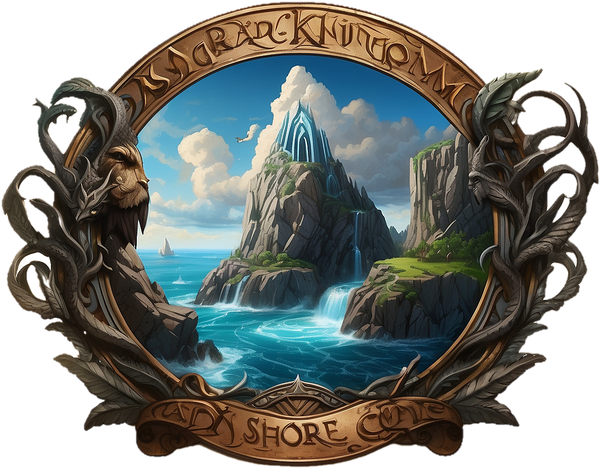The Viking Calendar and Festivals: How They Marked Time and Meaning
Share
How did the Norse mark the turning of time? Not with clocks and calendars, but with fire, frost, and fate.
The Viking worldview was deeply cyclical. Life followed the rhythm of the earth, the sky, and the will of the gods. Time wasn't just something to track, it was something to honor. Every solstice, every full moon, every harvest had a purpose. The seasons weren’t passive; they were sacred. They demanded sacrifice, celebration, and stillness.
Welcome to the Viking calendar — a forgotten system that gave life its sacred structure.
Seasons, Solstices, and Sacred Cycles
The Viking year was divided primarily by nature’s great events: the solstices, equinoxes, and agricultural milestones. These were not just dates — they were turning points in the Norse mythic cycle.
- Winter Solstice (Yule): Celebrated around the darkest day of the year, Yule was a time to honor rebirth and the return of the sun. Fires burned bright while stories echoed of gods who defied death, like Baldr and Odin himself.
- Summer Solstice: A time of strength, fertility, and growth. Offerings were made to Freyr and sun deities to ensure abundance and peace in the land.
- Spring & Autumn Equinoxes: Transitions between light and dark, life and death. These liminal periods were perfect for rituals honoring balance and fate, themes closely tied to the Norns, the weavers of destiny.
The calendar wasn't just about weather; it was a dance between gods, man, and the unseen threads pulling everything forward.
Feasts and Festivals: Community with the Divine
Where there was a shift in the season, there was a feast. Norse festivals were not casual meals — they were holy rites.
- Dísablót: Held in honor of the dísir — female spirits, ancestors, and sometimes Valkyries. This ritual sought protection and guidance, especially before spring battles or voyages.
- Álfablót: A private offering to the elves, often kept within the family. These were house-centered rituals, linked to fertility and ancestral respect.
- Blóts in general: Ceremonial sacrifices (animal or symbolic) were made to appease gods, spirits, or the land itself. They were often held at seasonal changes or major life events — births, marriages, and deaths.
Each festival was more than a party. It was a contract — a spiritual negotiation with the forces of the world.
The Rhythm of Fate
The Norns — Urd, Verdandi, and Skuld — sat beneath the World Tree, carving runes into its roots. They didn’t just observe fate. They shaped it.
The Viking calendar reflected this worldview. Time wasn’t linear. It wasn’t progress for the sake of growth. It was pattern, meaning, and return. Just as the Tree of Life (Yggdrasil) connected all realms, the passing months connected all beings to the sacred cycle of existence.
To live by the Viking calendar was to remember: you are not separate from time. You are part of its design.
Symbols of the Eternal Cycle
In Viking culture, certain symbols reflected this cyclical nature of time and life:
- The Tree of Life – A powerful symbol of connection, growth, and rebirth. Its roots hold the past. Its branches reach for fate.
- The Norns – Goddesses who wove the threads of destiny, tied deeply to moments of transition and turning points.
These symbols weren’t just decoration. They were reminders. That time flows, fate watches, and nothing returns unchanged.
Final Thoughts
In a world so obsessed with deadlines and dates, maybe there’s something sacred in the old ways. The Vikings didn’t just count time — they marked it. They celebrated it. They understood that seasons aren’t obstacles — they are opportunities to reconnect with the self, the gods, and the stories that live on in us all.
So next time the sun rises a little earlier, or the air shifts with the cold…
Pause.
You might be standing at a gate the ancients once honored with fire and song.
